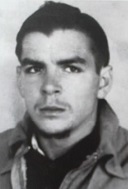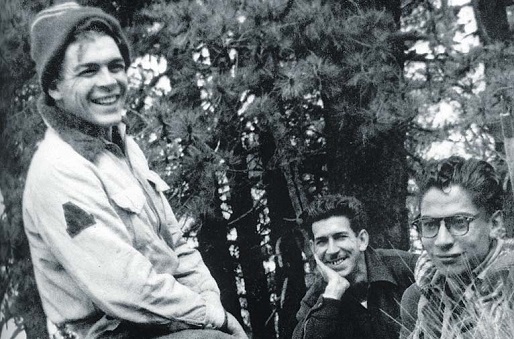|
1952 - 1955 Crucial years
Aleida 2013.10.11. 09:47

Ernesto graduated to make his promise to his mother come true but actually he didn't want to set up a practice or settle down - he wanted to travel around the world. He wanted to explore Latin America and also to visit Paris. By that time he spoke French fluently, thanks to his mother who had taught him, and he had devoured a huge amount of books from world literature to philosophy. He planned to make a new journey as soon as he finished his studies.
On 11th April 1953 Ernesto received his university degree. He phoned his mother and said: 'This is Doctor Guevara de la Serna speaking.' Then he went to see his friend, Calica and told him: 'Here you are, you fool. I was not going to graduate? Get ready, Calica. We are leaving soon.'
On 7th July 1953 the second South American trip began. This time Ernesto chose to travel by train - he and Calica were sitting on second class because they wanted to save as much money as possible. Ernesto carried a huge pile of books in his luggage because he loved reading everywhere. He said farewell to his loved ones by these words: 'Here goes a soldier of the Americas.'
They planned to visit Bolivia, Peru, Ecuador, Colombia and Venezuela. With the exception of Bolivia, it was really difficult to obtain a visa so the young men had some hard time with the consuls. Ernesto had some serious asthma attacks again, but in the whole, they both really enjoyed their journey and amazing adventures. Just like on the first journey, sometimes trouble found Ernesto.
They met old friends, they made new friendships and dated local girls. They worked when they had the opportunity - in Lima they spent some time on the leprosy ward that was a moving experience for Ernesto again. They explored the beauty of the nature, visited mines, Inca ruins and temples (where Ernesto found a real Inca statuette in Bolivia) and Machu Picchu. This place brought out Ernesto's hatred of imperialism.
The young men even played football with local people, went to some parties and enjoyed local luxurian nightlife (where in La Paz Ernesto saw people use cocaine for the first time). But they also faced the poverty of the Native Indians and their cruel treatment by the white people. Sometimes they ate little and lived in dirty rooms, sometimes they had a lot to eat and slept in comfortable beds but they lived so much more.
Ernesto started to be interested in politics more and more.
After visiting Bolivia and Peru together, Ernesto and Calica continued on different paths. Calica went to Quito with a football team, while Ernesto travelled to Panama. He also visited Costa Rica and Nicaragua, he had two of his articles (about Machu Picchu) published in local newspapers, then he left for Guatemala.
In Guatemala City he met Hilda Gadea. She was a Peruvian economist, with Chinese and indigenous blood in her veins, living in exile because of her political activities. They quickly became friends due to their common interest in politics and literature. They could also discuss Marxism. Hilda introduced him to new friends. Ernesto gave Spanish lessons and was looking for a job as a doctor (in vain).
On the New Year's Eve party he met some Cuban exiles who survived the fatal attack on the Moncada Barracks on 26 July 1953 and who were waiting for their leader, a young lawyer, Fidel Castro to leave prison and join them abroad.
In Santiago Fidel decided to set his home country free of the puppet government of Fulgencio Batista, supported by the USA. The Castro brothers (Fidel and his younger brother, Raúl) and their secret group attempted to attack the barracks but they failed. The Castros and some of their fighters were put into jail, others died.
At first Ernesto listened to the Cubans with disbelief, but soon he made friends with them - it was one of them, Ñico López, who gave Ernesto the nickname 'Che' and with whom Ernesto started a business of selling the photo of the black Jesus, completed with a little bulb, that lit and "made a miracle" this way.
In the mid-February of 1954 there were rumours that the USA was going to invade Guatemala and to remove President Arbenz and his socialist reforms. While some of his friends left, Ernesto stayed because he wanted to witness the events that started in mid-June. Arbenz resigned to avoid bloodshed but he couldn't stop the massacres and political purges.
Ernesto was asked to find refuge at the Argentinian embassy as he was known to the CIA as a troublemaker. After a short refusal, Ernesto spent a whole month there.
Guatemala was a real lesson for him. He used to believe in Gandhi's non-violent resistance but after seeing what happened following Arbenz's resignation, he thought that the enemy could be beaten only by using weapons and physical violence.

Later Ernesto left Guatemala and travelled to Mexico. At the border he made a new friendship - with the Guatemalan Julio Roberto Cáceres-Valle, nicknamed 'El Patojo' (meaning the Little because of his shortness). The two young men continued the journey together and they worked together. They also visited ruins at Mitla, then in Mexico City they started a business: taking photos of children and selling the pictures to the parents. Ernesto had other jobs: he worked in a children's hospital and he joined a research of allergies at the Hospital General.
Hilda followed Ernesto to Mexico but she was arrested at the border and she had to spend some time in jail. They continued dating despite ups and downs - like when he didn't accompany her to a New Year's Eve party but he worked as a watchman instead.
He might have been attracted to her sexually and he valued her as a great friend, but he didn't seem to be in love with her and he didn't want to settle down with her.
Ernesto started to spend more time with the Cuban exiles, he continued his researches and he was appointed to be the correspondent and photographer for Agencia Latina de Noticias to cover the Pan-American Games in Mexico City between 12th and 16th of March 1955.
In April he was congratulated on a paper he had submitted to a conference on allergy, then a little while later he accepted Hilda's invitation and they moved together.
In May the Castro brothers were set free from prison and they decided to leave for Mexico so they could plan their invasion of Cuba in secret.
In June Ernesto met Raúl Castro at María Antonia González's home, then next month he also met Fidel. They quickly made friends as they completed each other so well. They talked for hours during the night and by dawn Ernesto became the member of the Cuban expedition.
In August Hilda announced that she was pregnant. Ernesto decided to marry her only because of her having his child - according to his friends. (In his letters to his parents he wrote hardly anything about Hilda, he only mentioned his wedding and in his diaries - that were edited by his second wife - nothing could be read about the desire of settling down or being in love.) The private, simple ceremony was taken place in Mexico City on 18th August 1955.
The young couple moved to a new home, then Ernesto joined a group to climb Popocatepetl, Mexico's highest volcano.
In November Hilda and Ernesto went on a short honeymoon, visiting Mayan ruins and different cities.
[Ernesto wrote a diary about this journey that was published later with the title Latin America Diaries: Otra Vez, or a Second Look at Latin America (in other publication it wore the title Back on the Road (Otra Vez): A Journey Through Latin America).]
|

